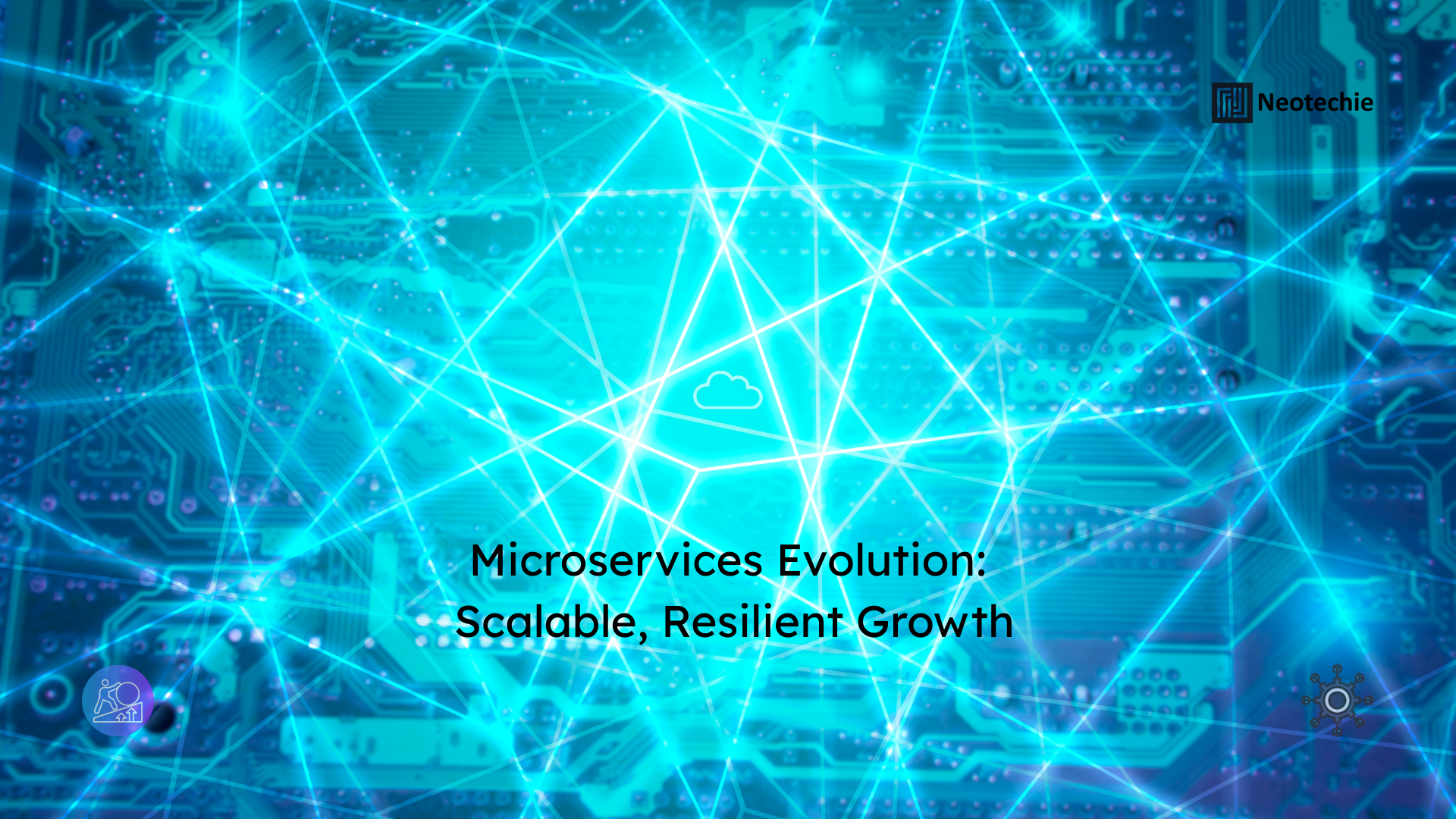Microservices Evolution — Designing Scalable and Resilient Architectures for Rapid Growth
Unlocking Agility Through Microservices
Modern enterprises face the dual challenge of delivering new features rapidly while maintaining system stability and scalability. Monolithic architectures, once the norm, often struggle under these demands. Microservices architecture transforms how businesses develop, deploy, and scale software by breaking applications into smaller, independent services that communicate over APIs. Each service is designed to handle specific functionality, enabling faster updates, independent scaling, and fault isolation.
Adopting microservices is not just a technical choice; it is a strategic business decision that drives agility, innovation, and digital transformation across the organization.
What Microservices Bring to Software Development
- Independent Deployment and Scalability
- What: Each microservice can be developed, tested, deployed, and scaled independently of others. This means one team can work on a new payment module while another team updates the inventory service, without impacting the whole system.
- Why: Monolithic applications require redeployment of the entire system even for minor changes, increasing risk and slowing time-to-market. Independent deployment allows teams to release features faster, reduce risk of system-wide failures, and respond to user demands swiftly.
- How: Teams design services with clear APIs and containerize each component using tools like Docker or Kubernetes. Automated deployment pipelines (CI/CD) enable rapid updates. For example, a retail platform can scale the checkout microservice independently during high traffic seasons, ensuring uninterrupted transactions and efficient resource utilization.
- Enhanced Fault Isolation
- What: Failures in one microservice are contained and do not cascade to other services. This isolation ensures other parts of the application continue to function normally.
- Why: In monolithic systems, a single error can take down the entire application, resulting in service outages, lost revenue, and poor customer experience.
- How: By deploying microservices independently with monitoring and failover mechanisms, organizations can isolate issues quickly. For example, if a recommendation engine in an e-commerce platform fails, the checkout and payment processes remain unaffected. This improves reliability, reduces downtime, and maintains seamless user experience.
- Flexible Technology Stack
- What: Microservices allow teams to choose the best programming language, framework, or database for each service based on its requirements.
- Why: Monolithic systems often lock teams into a single technology stack, which may not be optimal for all features, limiting innovation.
- How: For example, teams can use Python for AI-powered recommendation services, Node.js for real-time notifications, or Java for core financial operations. This flexibility enables rapid adoption of new technologies, enhances feature performance, and encourages innovation.
- Accelerated Development and Continuous Delivery
- What: Multiple teams can work concurrently on different microservices, reducing dependencies and bottlenecks in development cycles.
- Why: Traditional development slows innovation because teams wait for shared modules or database updates.
- How: Implementing CI/CD pipelines allows each service to be built, tested, and deployed independently. For example, a logistics platform can update tracking features while customer support chatbots receive separate enhancements simultaneously. This reduces time-to-market, increases feature delivery frequency, and boosts competitiveness.
- Improved System Maintainability
- What: Smaller, independent services are easier to understand, test, and update. Each team can maintain its service without needing to comprehend the entire application.
- Why: Monolithic systems grow complex over time, making debugging and updates error-prone and resource-intensive.
- How: With microservices, teams can perform targeted testing and incremental improvements. They can deploy updates for a single service without affecting others. This reduces technical debt, enhances code quality, and ensures long-term sustainability.
Why Microservices Matter for Businesses
- Agility and Speed: Rapid deployment of individual services allows businesses to adapt quickly to market changes.
- Operational Resilience: Fault isolation ensures uninterrupted business operations even if one service fails.
- Cost Efficiency: Independent scaling prevents over-provisioning, optimizing infrastructure costs.
- Innovation Enablement: Flexible technology stacks allow teams to experiment with new tools and frameworks.
- Enhanced Customer Experience: Continuous delivery and seamless updates improve user satisfaction and engagement.
Driving Business Transformation Through Microservices
- Faster Market Response: Enterprises can launch new features or products quickly, capturing opportunities ahead of competitors.
- Data-Driven Decisions: Microservices integrate seamlessly with analytics and AI, providing real-time insights for strategic decisions.
- Resource Optimization: Scalable services ensure infrastructure is used efficiently, reducing waste and cost.
- Cultural Shift: Encourages DevOps practices and cross-functional collaboration, fostering agility and innovation.
- Customer-Centric Innovation: Services can be tailored and updated based on user behavior, enhancing engagement and loyalty.
How Neotechie Can Help
At Neotechie, we help businesses harness microservices to drive digital transformation:
- Design scalable, resilient, and modular architectures aligned with business goals.
- Implement CI/CD pipelines to accelerate development, testing, and deployment.
- Ensure fault isolation and system reliability for uninterrupted operations.
- Integrate analytics and AI capabilities within microservices for actionable insights.
- Provide consulting and ongoing support to optimize technology stacks, reduce technical debt, and foster innovation.
✰ Microservices architecture is more than a technical choice—it is a strategic enabler of business transformation. Neotechie empowers enterprises to build scalable, resilient, and agile software systems that drive growth, innovation, and operational excellence. ✰

